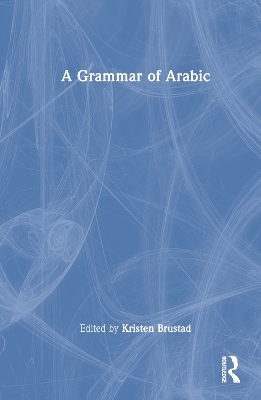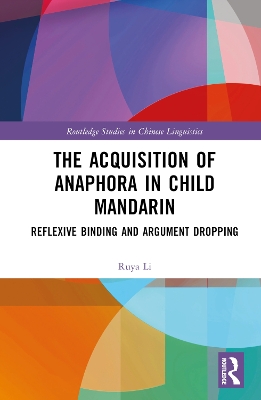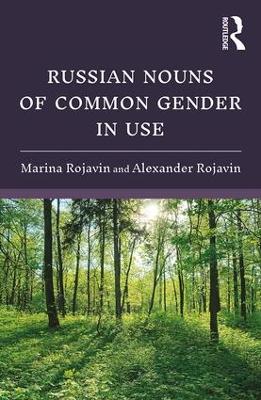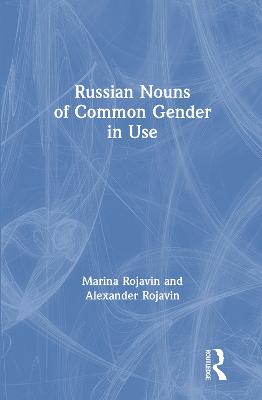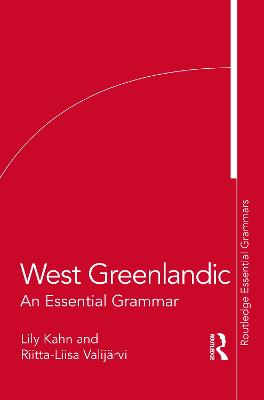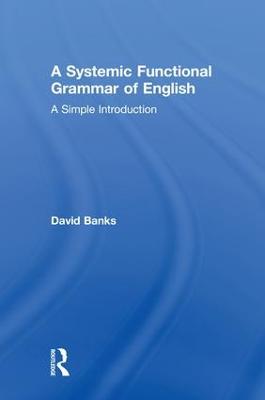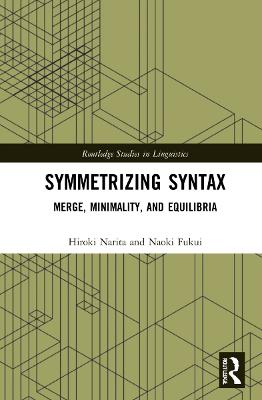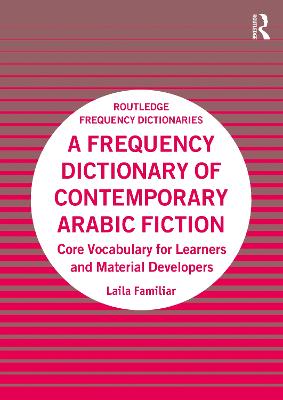Georgian
 -10%
portes grátis
-10%
portes grátis
Georgian
A Comprehensive Grammar
Kiziria, Dodona; Bolkvadze, Tinatin
Taylor & Francis Ltd
06/2023
530
Dura
Inglês
9781138241121
15 a 20 dias
GEORGIAN LANGUAGE AND ALPHABET
1. PLACE OF THE GEORGIAN LANGUAGE AMONG
THE SOUTH CAUCASIAN LANGUAGES
2. THE GEORGIAN ALPHABET
PHONOLOGY
3. SOUND SYSTEM OF THE GEORGIAN LANGUAGE
3.1. Classification of consonants
3.1.1. Consonant triples
3.1.2. Consonant pairs
3.1.3. Separate consonants
3.1.4. Structure of consonant clusters
3.2. Classification of vowels
3.2.1. Backness
3.2.2. Height
3.2.3. Traingle of vowels
MORPHOLOGY
4. NOUNS
4.1. Noun groups
4.1.1. Animate and inanimate nouns
4.1.2. Concrete and abstract nouns
4.1.3. Proper and common nouns
4.1.4. Collective nouns
4.1.5. Noncount nouns
4.2. Grammatical categories of nouns
4.2.1. Case and number markers
4.2.2. Function of cases
4.3. Declension of noun
4.3.1. Declension of common nouns
4.3.1.1. Declension of consonant-stem
non-syncopating common nouns
4.3.1.2. Declension of consonant-stem
syncopating common nouns
4.3.1.3. Consonant-stem common nouns with
irregular syncopation patterns
4.3.1.4. Declension of vowel-stem common
nouns
4.3.1.5. Declension of vowel-stem
non-truncating common nouns
4.3.1.6. Declension of vowel-stem truncating
common nouns
4.3.1.7. Vowel-stem common nouns with
irregular declension patterns
4.3.1.8. Declension of vowel-stem truncating
common nouns with syncope
4.4. Declension of proper names
4.4.1. Declension of consonant-stem personal names
4.4.2. Declension of consonant-stem geographic names
4.4.3. Declension of vowel-stem given names
4.4.4. Declension of vowel-stem family names
4.4.5. Declension of given and family names together
4.4.6. Vowel-stem geographic names
4.4.6.1. Non-truncating geographic names
4.4.6.2. Truncating geographic names
5. ADJECTIVES
5.1. Groups of Adjectives
5.1.1. Derivative Adjectives
5.2. Comparative and superlative Adjectives
5.3. Declension of Adjectives
5.3.1. Declension of adjectives without noun
5.3.2. Declension of Adjectives preceding noun
5.3.2.1. Declension of vowel-stem adjectives
preceding noun
5.3.2.2. Declension of consonant stem adjectives
preceding noun
6. NUMERALS
6.1. Types of numerals
6.1.1. Cardinal numerals
6.1.2. Spelling of Cardinal Numerals
6.2. Ordinal and Fractional Numerals
6.3. Declension of Numerals
6.3.1. Declension of consonant-stem cardinal numerals
6.3.1.1. Declension of consonant-stem cardinal
numerals
6.3.1.2. Declension of consonant-stem quantifiers
6.3.2. Declension of vowel-stem numerals
6.3.2.1. Declension of vowel-stem cardinal
numerals
6.3.2.2. Declension of vowel-stem quantifiers
6.3.2.3. Declension of vowel stem ordinal numerals
6.3.3. Declension of cardinal numerals extended
by particles
6.3.4. Declension of numerals followed by noun
6.3.4.1. Declension of vowel-stem numerals
followed by noun
6.3.4.2. Declension of consonant-stem cardinal
numerals followed by noun
6.3.5. Declension of numerals followed by numerals
7. PRONOUNS
7.1. Personal pronouns and their declension
7.2. Reflexive pronouns
7.3. Possessive pronouns and their declension
7.3.1. Declension of possesive pronouns with noun
7.4. Demonstrative pronouns
7.4.1. Declension of demonstrative pronouns
7.4.2. Declension of demonstrative pronouns preceding
noun
7.4.3. Declension of demonstrative pronouns with added
particles separately and with noun
7.5. Interrogative pronouns and their declension
7.5.1. Declension of interrogative pronouns preceding
noun
7.6. Possessive-interrogative pronouns and their
declension
7.6.1. Declension of possessive-interrogative pronouns
preceding noun
7.7. Negative pronouns and their declension
7.8. Definite pronouns and their declension
7.8.1. Declension of definite pronouns preceding noun
7.9. Indefinite pronouns and their declension
7.9.1. Declension of indefinite pronouns preceding noun
7.10. Reciprocal pronouns and their declension
7.11. Relative pronouns and their Declension
8. COMPOUNDS
8.1. Semantics of Compounds
8.2. Structure of Compounds
8.2.1. Compounds with reduplicated stems
8.2.2. Compounds with different stems
8.2.3. Closed Compounds
9. VERBS
9.1. Person and number of the Verb
9.1.1. Persons and actants
9.1.2. Subject and number markers
9.1.3. Direct/indirect object and number markers
9.1.4. Subject and object cases
9.1.5. Inversion of subject and object markers
9.1.6. Grammatical and actual verb persons
9.2. Preverbs
9.2.1. Structure of preverbs
9.2.2. Functions of preverb
9.3. Voice and Transitivity of verbs
9.3.1. Active voice
9.3.2. Passive voice
9.3.2.1. Suffixal passive voice verbs
9.3.2.2. Prefixal passive voice verbs
9.3.2.3. Root passive voice verbs
9.3.3. Medial verbs
9.3.3.1. Medio-Active verbs
9.3.3.2. Medio-Passive verbs
9.4. Version
9.4.1. Neutral and Locative versions
9.4.2. Subjective version
9.4.3. Objective version
9.5. Tense and its subcategories
9.5.1. Mood
9.5.2. Aspect
9.6. Conjugation of Verbs
9.6.1. I Series
9.6.1.2. Present Subseries
9.6.1.2.1. Present
9.6.1.2.2. Imperfect
9.6.1.2.3. Present subjunctive
9.6.1.3. Future Subseries
9.6.2. II Series
9.6.2.1. Aorist
9.6.2.2. Optative
9.6.3. III Series
9.6.3.1. Perfect
9.6.3.2. Pluperfect
9.6.3.3. Perfect subjunctive
9.7. Irregular verbs
9.7.1. Irregular verbs with changing stems in agreement
with a plural subject
9.7.2. Irregular verbs with changing stems in agreement
with a plural direct object
9.7.3. Honorific verbs of polite conversation
9.7.4. Irregular verbs with changing stems by tense
9.7.5. Irregular verbs with changimg stems by aspect
9.8. Verbal nouns
9.8.1. Gerund and its derivation
9.8.2. Participles
9.8.2.1. Active voice Participles
9.8.2.2. Passive voice participles
9.8.2.2.1. Past passive participles
9.8.2.2.2. Future passive participles
9.8.2.2.3 Negative passive participles
9.8.2.3. Medial voice participles
10. ADVERBS
10.1. Primary and derivative adverbs
10.2. Semantic groups of Adverbs
11. POSPOSITIONS
12. CONJUNCTIONS
12.1. Coordinating Conjunctions
12.1.1. Correlative Conjunctions
12.1.2. Separating Conjunctions
12.1.3. Contrastive Conjunctions
12.1.4. Equating Conjunctions
12.2. Subordinating Conjunctions
13. PARTICLES
13.1. Interrogative particles
13.2. Limiting particles
13.3. Negation particles
13.4. Affirmative particles
13.5. Reported speech particles
13.6. Approximating particles
13.7. Emphasizing particles
13.8. Particles expressing wish or desire
13.9. Selective particles
13.10. Particles expressing possibility or supposition
13.11. Imitative particles
13.12. Indicative particles
13.13. Particle denoting frequency of action
13.14. Particle denoting not witnessed action
13.15. Parts of speech functioning as particles
14. INTERJECTIONS
SINTACTIC STRUCTURES
15. NOUN PHRASE
15.1. Noun/subject
15.2. Noun/direct and indirect objects
15.3. Adjectives
15.3.1. Attributive adjectives
15.3.2. Genitive modifier
16. VERB PHRASE
16.1. Predicate
16.1.1. Simple predicate
16.1.2. Compound predicate and its structure
16.2. Adjunct object
16.3. Predicative adjective
16.4. Adverbial modifiers
17. SYNTACTYC PAIRS
17.1. Number of syntactic pairs in the sentence
17.2. Types of word relations within syntactic pairs
17.2.1. Coordination
17.2.2. Subordination
17.3. Increasing and decreasing basic parts of a
sentence
17.3.1. Increasing the number of actants in a
sentence
17.3.1.1. Increasing the number of actants with
causative verbs
17.3.1.2. Increasing the number of actants by
changing version
17.3.1.3. Increasing the number of actants
with preverbs
17.3.2. Decreasing the number of actants in a sentence
17.3.2.1. Conversion
18. MODALITY OF SENTENCES
18.1. Declarative sentence
18.2. Interrogative sentence
18.3. Imperative and Exclamative sentences
18.4. Interrogative-Exclamative sentence
19. STRUCTURE OF SENTENCES
19.1. Simple Sentences
19.1.1. Unextended and extended sentences
19.1.2. Complete and Incomplete Sentences
19.1.3. Sentences without or with omitted subjects
19.1.4. Noun-sentence
19.2. Sentence with coordinated parts
19.2.1. Coordinated parts
19.2.1.1. Joining coordinated parts
19.3. Coordinated parts in syntactic pairs
19.3.1. Compound predicates
19.3.2. Compound subjects
19.3.3. Coordinated direct objects
19.3.4. Coordinated indirect objects
19.4. Parenthetical words and phrases
19.4.1. Appositive
19.4.2. Free modifiers
19.4.3. Asides
19.4.4. Addressing formulas and expressions
20. COMPLEX SENTENCE
20.1. Complex coordinate sentence
20.2. Complex subordinate sentence
20.3. Adverbial Clause of Condition
20.4. Adverbial Clause of Concession
20.5. Adverbial Clause of Result
20.6. The compound-complex sentence
20.6.1. Compound sentence with several subordinate
clauses
20.6.2. Mixed sentences
20.7. Direct and Indirect speech
BIBLIOGRAPHY
GEORGIAN LANGUAGE AND ALPHABET
1. PLACE OF THE GEORGIAN LANGUAGE AMONG
THE SOUTH CAUCASIAN LANGUAGES
2. THE GEORGIAN ALPHABET
PHONOLOGY
3. SOUND SYSTEM OF THE GEORGIAN LANGUAGE
3.1. Classification of consonants
3.1.1. Consonant triples
3.1.2. Consonant pairs
3.1.3. Separate consonants
3.1.4. Structure of consonant clusters
3.2. Classification of vowels
3.2.1. Backness
3.2.2. Height
3.2.3. Traingle of vowels
MORPHOLOGY
4. NOUNS
4.1. Noun groups
4.1.1. Animate and inanimate nouns
4.1.2. Concrete and abstract nouns
4.1.3. Proper and common nouns
4.1.4. Collective nouns
4.1.5. Noncount nouns
4.2. Grammatical categories of nouns
4.2.1. Case and number markers
4.2.2. Function of cases
4.3. Declension of noun
4.3.1. Declension of common nouns
4.3.1.1. Declension of consonant-stem
non-syncopating common nouns
4.3.1.2. Declension of consonant-stem
syncopating common nouns
4.3.1.3. Consonant-stem common nouns with
irregular syncopation patterns
4.3.1.4. Declension of vowel-stem common
nouns
4.3.1.5. Declension of vowel-stem
non-truncating common nouns
4.3.1.6. Declension of vowel-stem truncating
common nouns
4.3.1.7. Vowel-stem common nouns with
irregular declension patterns
4.3.1.8. Declension of vowel-stem truncating
common nouns with syncope
4.4. Declension of proper names
4.4.1. Declension of consonant-stem personal names
4.4.2. Declension of consonant-stem geographic names
4.4.3. Declension of vowel-stem given names
4.4.4. Declension of vowel-stem family names
4.4.5. Declension of given and family names together
4.4.6. Vowel-stem geographic names
4.4.6.1. Non-truncating geographic names
4.4.6.2. Truncating geographic names
5. ADJECTIVES
5.1. Groups of Adjectives
5.1.1. Derivative Adjectives
5.2. Comparative and superlative Adjectives
5.3. Declension of Adjectives
5.3.1. Declension of adjectives without noun
5.3.2. Declension of Adjectives preceding noun
5.3.2.1. Declension of vowel-stem adjectives
preceding noun
5.3.2.2. Declension of consonant stem adjectives
preceding noun
6. NUMERALS
6.1. Types of numerals
6.1.1. Cardinal numerals
6.1.2. Spelling of Cardinal Numerals
6.2. Ordinal and Fractional Numerals
6.3. Declension of Numerals
6.3.1. Declension of consonant-stem cardinal numerals
6.3.1.1. Declension of consonant-stem cardinal
numerals
6.3.1.2. Declension of consonant-stem quantifiers
6.3.2. Declension of vowel-stem numerals
6.3.2.1. Declension of vowel-stem cardinal
numerals
6.3.2.2. Declension of vowel-stem quantifiers
6.3.2.3. Declension of vowel stem ordinal numerals
6.3.3. Declension of cardinal numerals extended
by particles
6.3.4. Declension of numerals followed by noun
6.3.4.1. Declension of vowel-stem numerals
followed by noun
6.3.4.2. Declension of consonant-stem cardinal
numerals followed by noun
6.3.5. Declension of numerals followed by numerals
7. PRONOUNS
7.1. Personal pronouns and their declension
7.2. Reflexive pronouns
7.3. Possessive pronouns and their declension
7.3.1. Declension of possesive pronouns with noun
7.4. Demonstrative pronouns
7.4.1. Declension of demonstrative pronouns
7.4.2. Declension of demonstrative pronouns preceding
noun
7.4.3. Declension of demonstrative pronouns with added
particles separately and with noun
7.5. Interrogative pronouns and their declension
7.5.1. Declension of interrogative pronouns preceding
noun
7.6. Possessive-interrogative pronouns and their
declension
7.6.1. Declension of possessive-interrogative pronouns
preceding noun
7.7. Negative pronouns and their declension
7.8. Definite pronouns and their declension
7.8.1. Declension of definite pronouns preceding noun
7.9. Indefinite pronouns and their declension
7.9.1. Declension of indefinite pronouns preceding noun
7.10. Reciprocal pronouns and their declension
7.11. Relative pronouns and their Declension
8. COMPOUNDS
8.1. Semantics of Compounds
8.2. Structure of Compounds
8.2.1. Compounds with reduplicated stems
8.2.2. Compounds with different stems
8.2.3. Closed Compounds
9. VERBS
9.1. Person and number of the Verb
9.1.1. Persons and actants
9.1.2. Subject and number markers
9.1.3. Direct/indirect object and number markers
9.1.4. Subject and object cases
9.1.5. Inversion of subject and object markers
9.1.6. Grammatical and actual verb persons
9.2. Preverbs
9.2.1. Structure of preverbs
9.2.2. Functions of preverb
9.3. Voice and Transitivity of verbs
9.3.1. Active voice
9.3.2. Passive voice
9.3.2.1. Suffixal passive voice verbs
9.3.2.2. Prefixal passive voice verbs
9.3.2.3. Root passive voice verbs
9.3.3. Medial verbs
9.3.3.1. Medio-Active verbs
9.3.3.2. Medio-Passive verbs
9.4. Version
9.4.1. Neutral and Locative versions
9.4.2. Subjective version
9.4.3. Objective version
9.5. Tense and its subcategories
9.5.1. Mood
9.5.2. Aspect
9.6. Conjugation of Verbs
9.6.1. I Series
9.6.1.2. Present Subseries
9.6.1.2.1. Present
9.6.1.2.2. Imperfect
9.6.1.2.3. Present subjunctive
9.6.1.3. Future Subseries
9.6.2. II Series
9.6.2.1. Aorist
9.6.2.2. Optative
9.6.3. III Series
9.6.3.1. Perfect
9.6.3.2. Pluperfect
9.6.3.3. Perfect subjunctive
9.7. Irregular verbs
9.7.1. Irregular verbs with changing stems in agreement
with a plural subject
9.7.2. Irregular verbs with changing stems in agreement
with a plural direct object
9.7.3. Honorific verbs of polite conversation
9.7.4. Irregular verbs with changing stems by tense
9.7.5. Irregular verbs with changimg stems by aspect
9.8. Verbal nouns
9.8.1. Gerund and its derivation
9.8.2. Participles
9.8.2.1. Active voice Participles
9.8.2.2. Passive voice participles
9.8.2.2.1. Past passive participles
9.8.2.2.2. Future passive participles
9.8.2.2.3 Negative passive participles
9.8.2.3. Medial voice participles
10. ADVERBS
10.1. Primary and derivative adverbs
10.2. Semantic groups of Adverbs
11. POSPOSITIONS
12. CONJUNCTIONS
12.1. Coordinating Conjunctions
12.1.1. Correlative Conjunctions
12.1.2. Separating Conjunctions
12.1.3. Contrastive Conjunctions
12.1.4. Equating Conjunctions
12.2. Subordinating Conjunctions
13. PARTICLES
13.1. Interrogative particles
13.2. Limiting particles
13.3. Negation particles
13.4. Affirmative particles
13.5. Reported speech particles
13.6. Approximating particles
13.7. Emphasizing particles
13.8. Particles expressing wish or desire
13.9. Selective particles
13.10. Particles expressing possibility or supposition
13.11. Imitative particles
13.12. Indicative particles
13.13. Particle denoting frequency of action
13.14. Particle denoting not witnessed action
13.15. Parts of speech functioning as particles
14. INTERJECTIONS
SINTACTIC STRUCTURES
15. NOUN PHRASE
15.1. Noun/subject
15.2. Noun/direct and indirect objects
15.3. Adjectives
15.3.1. Attributive adjectives
15.3.2. Genitive modifier
16. VERB PHRASE
16.1. Predicate
16.1.1. Simple predicate
16.1.2. Compound predicate and its structure
16.2. Adjunct object
16.3. Predicative adjective
16.4. Adverbial modifiers
17. SYNTACTYC PAIRS
17.1. Number of syntactic pairs in the sentence
17.2. Types of word relations within syntactic pairs
17.2.1. Coordination
17.2.2. Subordination
17.3. Increasing and decreasing basic parts of a
sentence
17.3.1. Increasing the number of actants in a
sentence
17.3.1.1. Increasing the number of actants with
causative verbs
17.3.1.2. Increasing the number of actants by
changing version
17.3.1.3. Increasing the number of actants
with preverbs
17.3.2. Decreasing the number of actants in a sentence
17.3.2.1. Conversion
18. MODALITY OF SENTENCES
18.1. Declarative sentence
18.2. Interrogative sentence
18.3. Imperative and Exclamative sentences
18.4. Interrogative-Exclamative sentence
19. STRUCTURE OF SENTENCES
19.1. Simple Sentences
19.1.1. Unextended and extended sentences
19.1.2. Complete and Incomplete Sentences
19.1.3. Sentences without or with omitted subjects
19.1.4. Noun-sentence
19.2. Sentence with coordinated parts
19.2.1. Coordinated parts
19.2.1.1. Joining coordinated parts
19.3. Coordinated parts in syntactic pairs
19.3.1. Compound predicates
19.3.2. Compound subjects
19.3.3. Coordinated direct objects
19.3.4. Coordinated indirect objects
19.4. Parenthetical words and phrases
19.4.1. Appositive
19.4.2. Free modifiers
19.4.3. Asides
19.4.4. Addressing formulas and expressions
20. COMPLEX SENTENCE
20.1. Complex coordinate sentence
20.2. Complex subordinate sentence
20.3. Adverbial Clause of Condition
20.4. Adverbial Clause of Concession
20.5. Adverbial Clause of Result
20.6. The compound-complex sentence
20.6.1. Compound sentence with several subordinate
clauses
20.6.2. Mixed sentences
20.7. Direct and Indirect speech
BIBLIOGRAPHY

